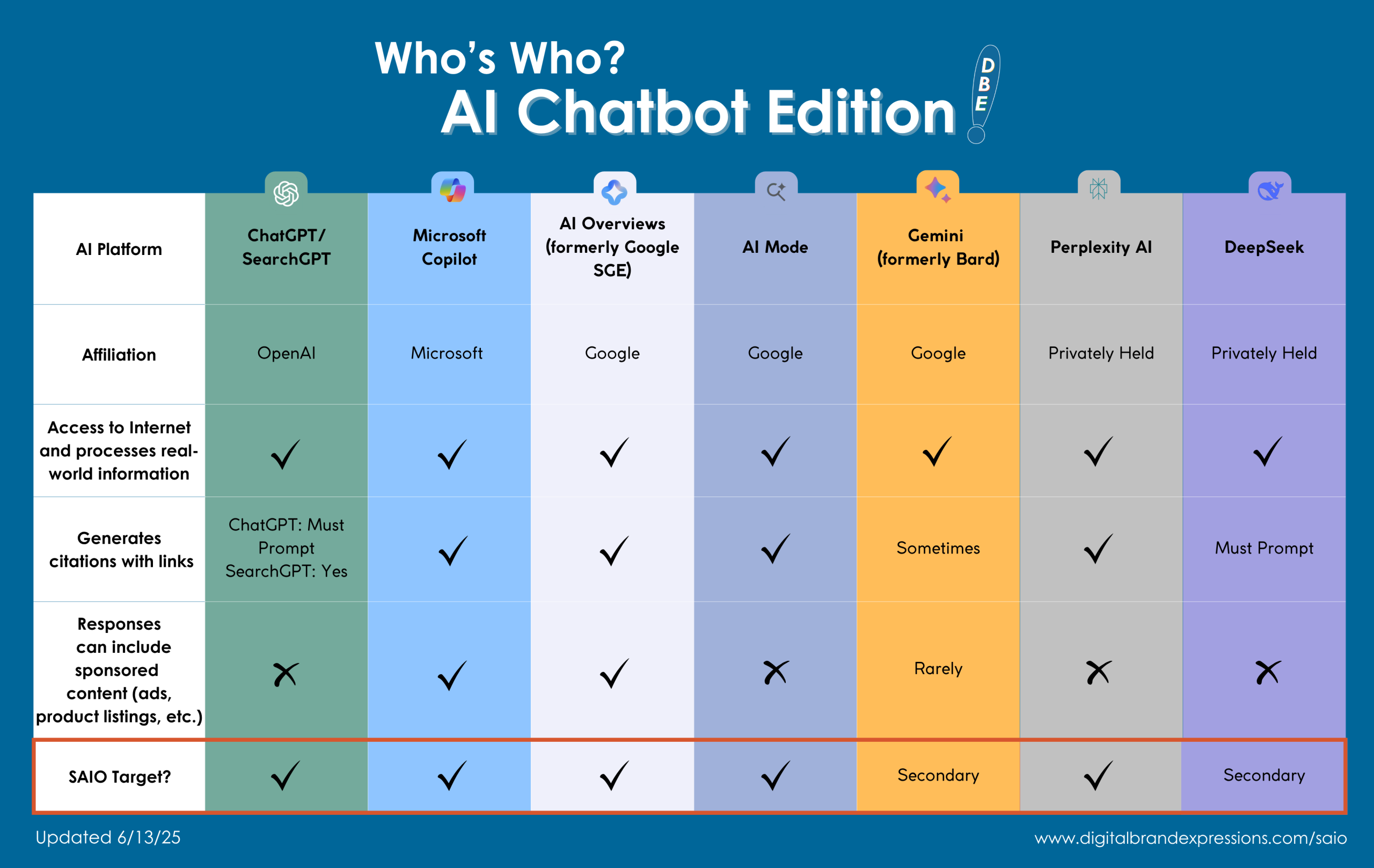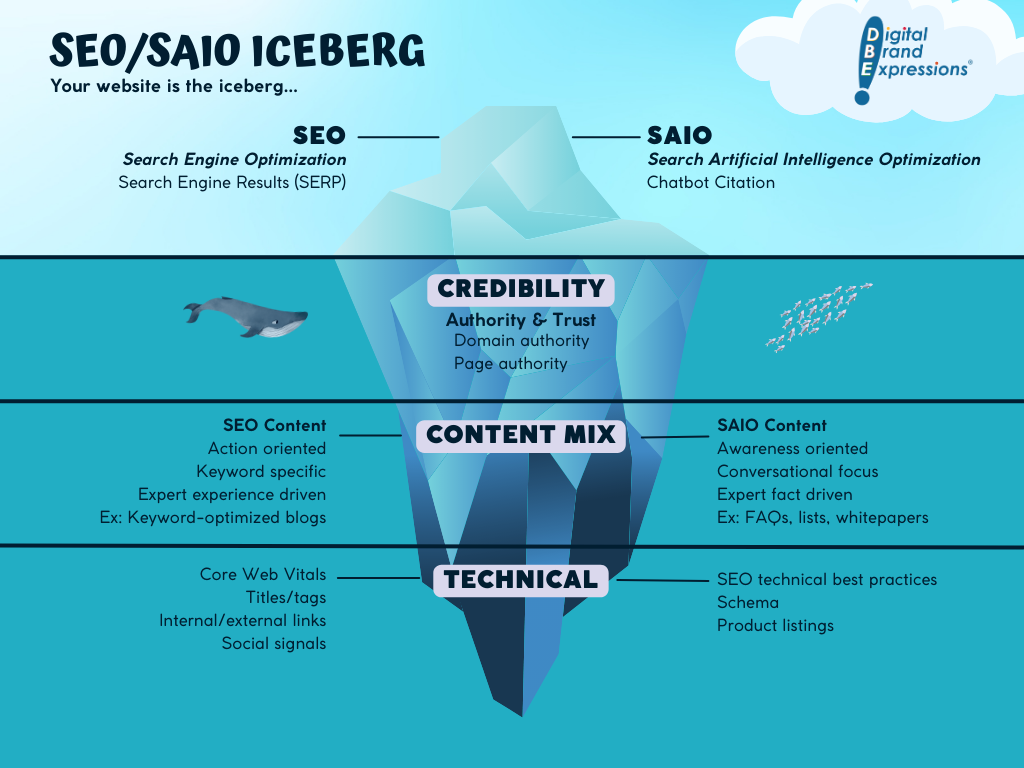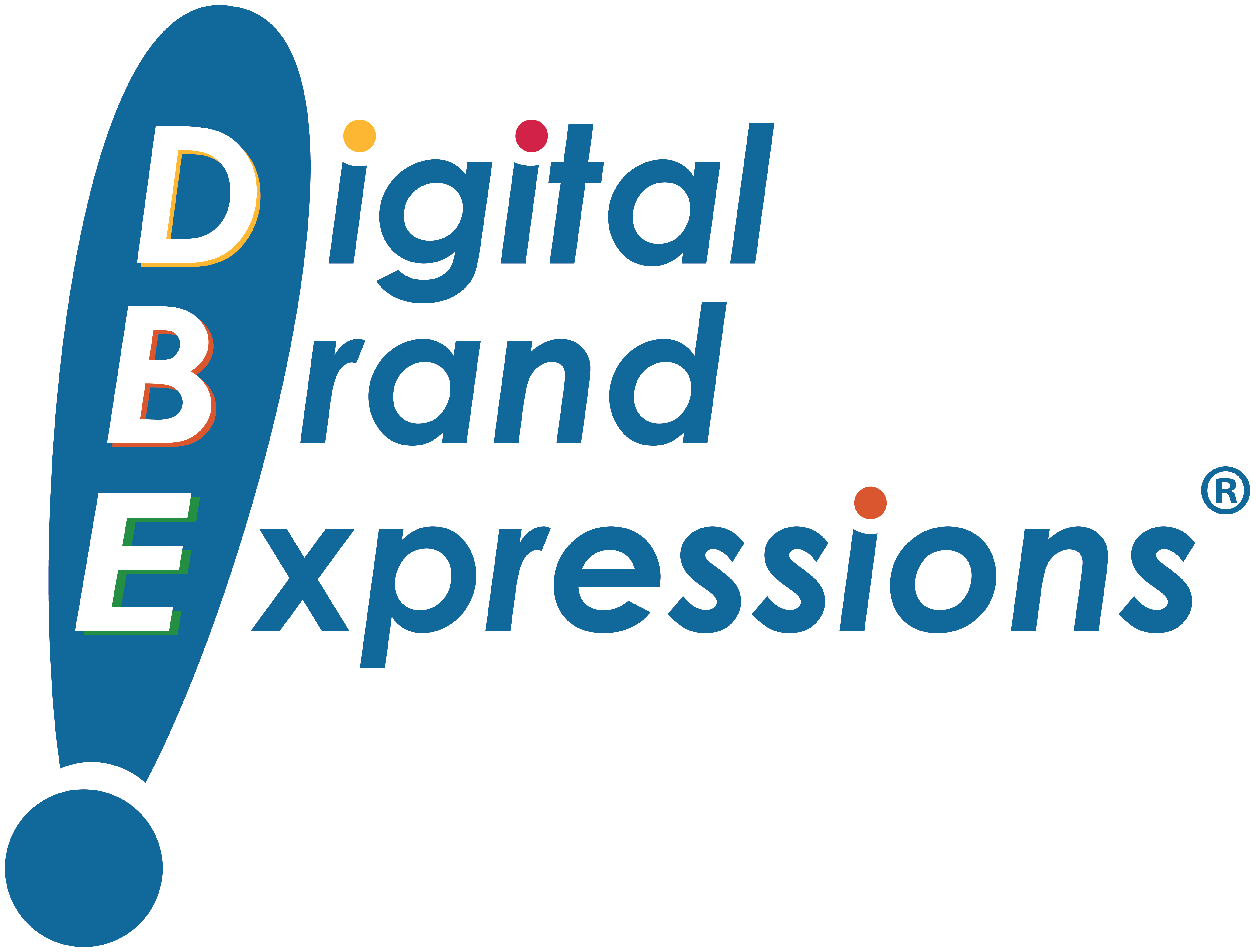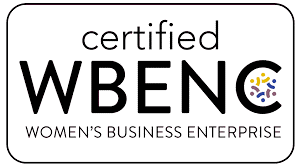Article Last Updated: 6/16/25
Last fall, DBE launched our new SAIO (say-o) strategy for optimizing websites to be found and cited when people conduct searches on AI chatbots. In a very short period of time, we’ve demonstrated the SAIO strategy works with several case studies posted on our website. There have also been questions around the concept of optimizing for conversational search chatbots. So, I’m here with Natalie to provide some answers. What’s the first question Natalie?
What does SAIO stand for?
SAIO (rhymes with day-o) stands for Search Artificial Intelligence Optimization. That’s a mouthful, so SAIO or Search AI Optimization if you’re feeling the need to compromise.
When you say AI here, do you mean using AI for quickly developing site content?
No, SAIO is for optimizing a website to be found by conversational chatbots, like Bing Copilot and Google AI Overviews (formerly Search Generative Experience). Think of it this way, instead of using AI for SEO visibility, we’re leveraging SAIO for AI visibility.
What about ChatGPT and Gemini – aren’t they also conversational and generative chatbots?
Yes, but when we first launched SAIO, they didn’t typically provide citations and links to the sources used in their responses. Without those citations, there was no SEO–type value–they don’t help drive site traffic.
But, as all things in the SEO world, the AI universe is ever expanding. Now, ChatGPT (with SearchGPT functionality) and Perplexity AI can access the internet and provide link citations. So we’ve updated this chart to show the similarities and differences between the growing list of citation-generating chatbots.

The chatbots we are looking at here are:
- ChatGPT/SearchGPT created by Open AI,
- Bing Copilot which is run by Microsoft using a ChatGPT license,
- Google AI Overviews (formerly Search Generative Experience),
- Google AI Mode
- Google’s Gemini (formerly Bard),
- Perplexity AI, and
- DeepSeek.
All are very similar in their conversational content generating capabilities.
Where they differ is in their ability to access the internet, process real-world information, and provide link citations that support their responses to prompts.
ChatGPT, ChatGPT Plus, and SearchGPT can access the internet. Its responses are also based on the masses of information that OpenAI trained it on.
Gemini can access the internet (through Google, of course), but it only sometimes provides citations for its sources. DeepSeek has a Search functionality that provides citations, but it does not always work.
Bing Copilot, Google AI Mode, Google AI Overviews, and Perplexity AI provide citations with links on a regular basis as part of the conversations which is why they are SAIO targets.
When we first created this chart, none of the AI platforms included sponsored content in the form of product listings and/or ads with their responses. Now, the Bing Copilot and Google AI platforms are showing sponsored results. These ads combined with Gen AI responses are pushing the natural organic search results further down the Google search results page. In many cases, they push organic results to “below the scroll” of the page. This is why predictions on the impact of AI Overviews on search traffic range from declines of 17% to 76% depending on the industry when it is fully rolled out. All the more reason for employing an integrated SEO and SAIO strategy.
So that covers the AI chatbots we’re currently targeting. How does optimization for these chatbots work?
Basically, because chatbots are learning machines, you need to help them find your website so they can “E-E-A-T” up your content and use it as a resource for relevant search results. Note that I am referring to the E-E-A-T acronym that stands for Experience, Expertise, Authority, Trust. Google recommends using this model for generating relevant content that helps gain rankings in the traditional search engines.
Isn’t E-E-A-T a best practice for SEO?
Yes, and having a well-optimized website that is generating natural search rankings is one of the ways the chatbots can find your website, too.
How is SAIO different from SEO?
The SAIO chatbots look at website content differently from the regular search bots. They are less influenced by the page and keyword specificity we use for SEO.
The SAIO content has to be more informational and conversational in nature.
Here’s our chart showing how SEO and SAIO are parts of the same optimization iceberg but work differently when you look underneath.

For SAIO, we recommend more structured types of content including schema and product listings from a technical perspective and FAQs, how-tos, infographics, etc. from a conversational perspective.
Thanks, Marc, for the SAIO and SEO FAQ conversation. I’m guessing you’re going to recommend we post a transcript of this video to help with our SAIO optimization.
Once again, Natalie, you read my mind. I’m hoping the chatbots E-E-A-T this up.

